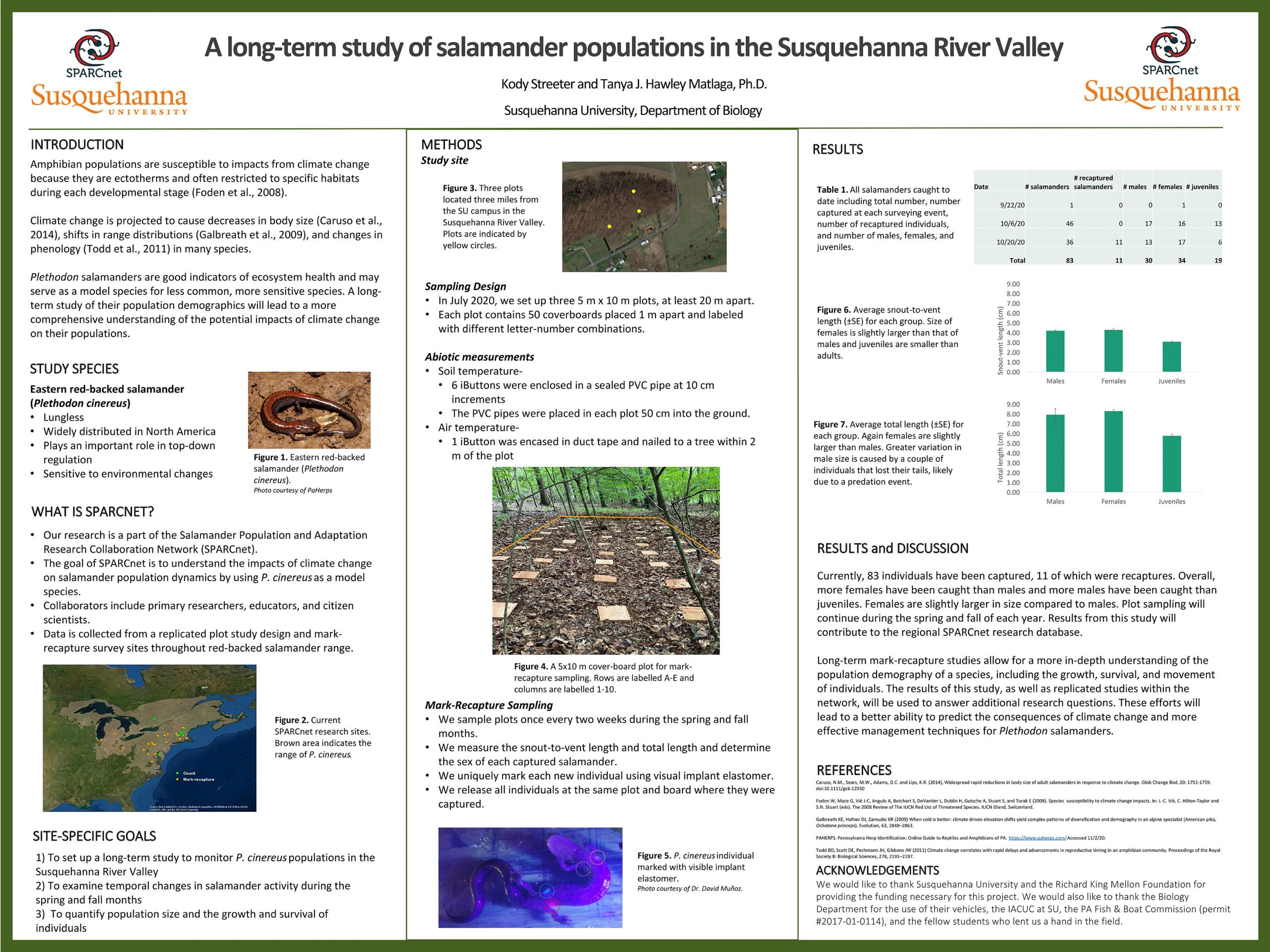Author:
Kody StreeterCo-Authors:
Tanya J. Hawley MatlagaInstitution:
Susquehanna UniversityAbstract
Amphibians have many biological characteristics that make them sensitive to changes in environmental conditions, particularly climate change. These characteristics allow researchers to use amphibians as indicators of environmental change and explore ways to mitigate adverse effects. The eastern red-backed salamander, Plethodon cinereus, can be used as a model organism in understanding the effects of a changing environment as it is abundant and widely distributed. Following systematic methods of SPARCnet, the Salamander Population and Adaptation Research Collaboration Network, we are investigating the population dynamics of P. cinerus in Selinsgrove, PA. We set up three mark-recapture plots, each containing 50 coverboards, in an area of known salamander presence. During each sampling event, we record soil and air temperature, as well as relative humidity. We measure the size and determine the sex of each salamander and mark each uniquely using visual implant elastomer. We describe our results from sampling events in Fall 2020 including the sex and size distributions of individuals found in the three plots. This long-term research will allow us to gain a comprehensive understanding of the population demographics, such as growth, survival, and movement of individuals over time. Results will contribute to the research network database and will be used to examine demographic patterns of the species across its range. We expect these efforts to lead to a better ability to predict the consequences of climate change and more effective management techniques.
